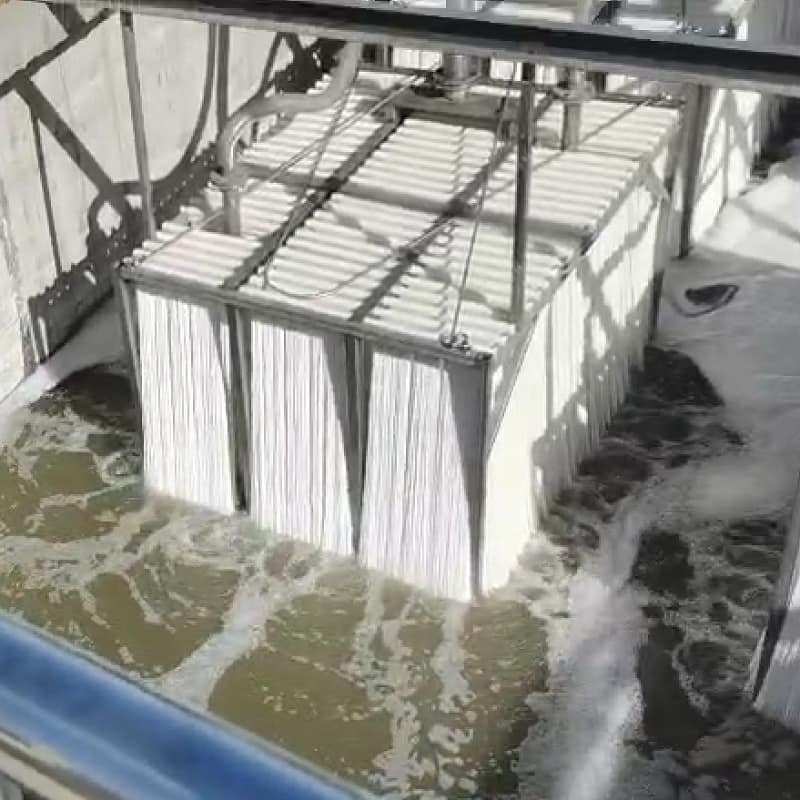Understanding Foam Types in Wastewater Treatment Plants: Causes and Solutions
Foam formation in aeration tanks is a common challenge faced by many wastewater treatment engineers. Different colors and characteristics of foam can indicate various conditions of the activated sludge and the treatment process. Recognizing these foam types and understanding their causes are crucial for maintaining stable wastewater treatment performance.
1. Brownish-Yellow Foam: Aging Activated Sludge
Phenomenon
Brownish-yellow foam typically appears in small amounts near the aeration diffuser and gradually disperses radially. The foam color matches the activated sludge, indicating its source.
Cause
This foam type results from aging activated sludge. As sludge ages, some flocs disintegrate and suspend in the mixed liquor. These suspended solids attach evenly to the bubbles during aeration, prolonging foam stability and causing accumulation.
2. Gray-Black Foam: Hypoxic Conditions and Sludge Death
Phenomenon
Gray-black foam shares similar quantity and formation characteristics as brownish-yellow foam but has a darker hue and produces gray-black deposits.
Cause
This foam indicates localized oxygen deficiency (hypoxia) within the activated sludge, causing partial anaerobic reactions. Sludge cells die during this transition from aerobic to anaerobic state and adhere to bubbles, leading to blackened foam.
Note: If gray-black foam is observed, check if the influent contains black dyes. Otherwise, verify if there are aeration deficiencies causing anaerobic zones in the biochemical tank.
3. White Foam: Common but Complex Causes
Phenomenon
White foam frequently occurs with varying appearances and reasons.
Causes
- High Organic Load: Thick, persistent white foam that accumulates easily.
- Excessive Aeration: Old white foam with poor accumulation, usually localized.
- Detergents: Presence of detergents increases surface tension, causing foam formation.
- Other factors may also contribute and require analysis.
4. Colored Foam: Influent Wastewater Composition
Phenomenon
Colored foam often occurs when colored wastewater with high organic content enters the biological treatment system, causing foam similar to high-load conditions.
Causes
- Colored Water: The natural color of influent wastewater is reflected in the foam.
- Surfactants and Detergents: These compounds increase foam generation.
- Sunlight Effect: Foam surfaces can display iridescent, rainbow-like colors under sunlight.
Why Proper Foam Management Matters
Foam, especially sticky biological foam from surface aeration, can hinder oxygen transfer by blocking normal aeration, lowering dissolved oxygen levels in the mixed liquor. Each foam type signals a different underlying process condition. Correct identification and tailored treatment strategies ensure optimal plant performance and sludge health.
Conclusion
Foam in wastewater treatment plants is more than a nuisance — it’s a diagnostic tool reflecting the system’s biological and chemical status. By understanding the types and causes of foam such as brownish-yellow aging sludge foam, gray-black hypoxic foam, white foam from various causes, and colored foam from influent characteristics, wastewater engineers can implement effective solutions and maintain system stability.
Keywords: wastewater treatment foam, activated sludge foam, aeration tank foam, sludge aging foam, anaerobic sludge foam, foam troubleshooting wastewater
For more information on activated sludge processes,please explore our related articles.





